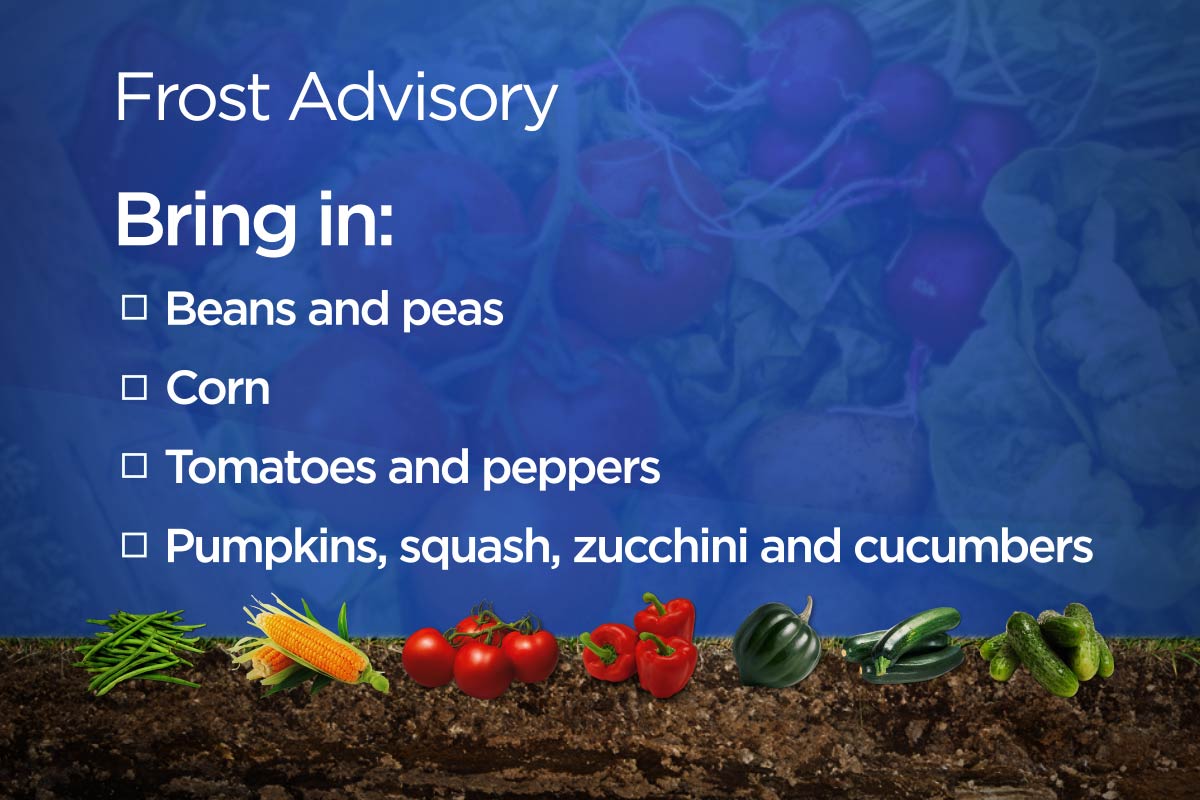Any time after May long weekend is traditionally when green thumbs in Alberta can safely plant their gardens and prepare their summer flower pots without worrying about frost until the fall — but Environment Canada is warning it could show up overnight.

A frost advisory was issued Monday afternoon for a swath of central Alberta, from the Calgary area in the south, north of Edmonton to the Athabasca and Swan Hills area, and from the western foothills to eastern Alberta areas such as Vegreville and Castor.
Frost may damage some crops in frost-prone areas, the national weather agency said.
Clearing skies overnight, combined with a cold air mass, will bring about overnight temperatures near or below zero and patchy frost is expected.
Global Edmonton weather specialist Phil Darlington believes throughout Edmonton, the temperature will dip to around 2 to 4 degrees, depending on where it is.
“While it’s not that uncommon to be around 4 C for a low in June, the last time it was at 2 C in June was in 2011,” Darlington said.
Outlying areas that do not benefit from the city’s heat dome should expect the mercury to reach zero or lower.
For example, Environment Canada’s hourly forecast in Rocky Mountain House predicts the temperature will reach -1 C at 5 a.m. Tuesday.
“Some cool air is moving into the region while a high is keeping skies clear,” Darlington said.
“Combined with a below-average day, we might see some frost patches develop in central Alberta.”

Gardeners are advised to take preventative measures to protect frost-sensitive plants and trees such as covering plants or moving them indoors.
For many green thumbs, the risk of frost means covering their tomatoes at night. But sometimes, not even a blanket can protect your hard-earned bounty.

Get breaking National news
So what can survive a cold night with a blanket or tarp over it, and what do you need to pick right away? There are a few garden vegetables that can weather the cold.
Here’s a basic list of what you should harvest when the temperatures dip to zero and a hard frost is expected, and what can hold on for a couple more weeks.
What to pick and bring inside
Beans and peas: Ripe or not, beans and peas do not do well with frost. If you expect a hard frost overnight, harvest these and enjoy.
Corn: Mature corn will not do well with frost and should be harvested immediately. Immature cobs can be left on the stalk with hopes for another week of growth, but a good freeze will shorten their shelf life by three or four days.
Tomatoes and peppers: Ripe tomatoes or peppers should be harvested immediately. If you have un-ripened ones on the vine, and the forecast calls for temperatures right around 0 C, you can take a gamble. Try placing your plants along the south side of your home and covering them with a blanket. If the forecast calls for -2 C or colder, you are better off harvesting the un-ripened goods and letting them ripen inside.
Gourds: Mature gourds with a thick skin should be harvested immediately. Eat your cucumbers right away. Cure your pumpkins, squashes and zucchinis in a cold, dark room on a non-metal or non-concrete surface — this will make them last longer. Immature pumpkins or squashes will not ripen off the vine, so you’ll want to leave them out until their skins are quite hard. Hope for the best by covering them with a blanket on those cold nights and be careful to not crush the vine.
What to leave in the garden
Apples: Many types of apples can stay on the tree until the end of September (assuming we don’t see a significant late-September snowstorm). A light frost can actually make the fruit sweeter and more flavourful.
Root vegetables: Vegetables like beets, carrots, onions and potatoes can stay underground until the soil around them starts to freeze. A light frost would be no problem, but any kind of frost that would freeze the ground around them would damage the goods.
Lettuce and salad greens: A light frost will change the texture of these items, and they should be harvested to avoid freezing. But if we see a few more nice weeks, the base of the plant could still grow. If you’re optimistic, try cutting away the usable greens and holding out to see if you can get another growth before the end of the season.
Kale, cabbage and chard: These hearty vegetables do well under a light frost. Their colours can become more vibrant and their taste more robust. But no garden plant will survive a deep freeze. If you think temperatures will drop significantly below 0 C overnight, your best bet would be to harvest them and bring them inside.
Frost advisories are issued when temperatures are expected to reach the freezing mark during the growing season, leading to potential damage and destruction to plants and crops.










Comments